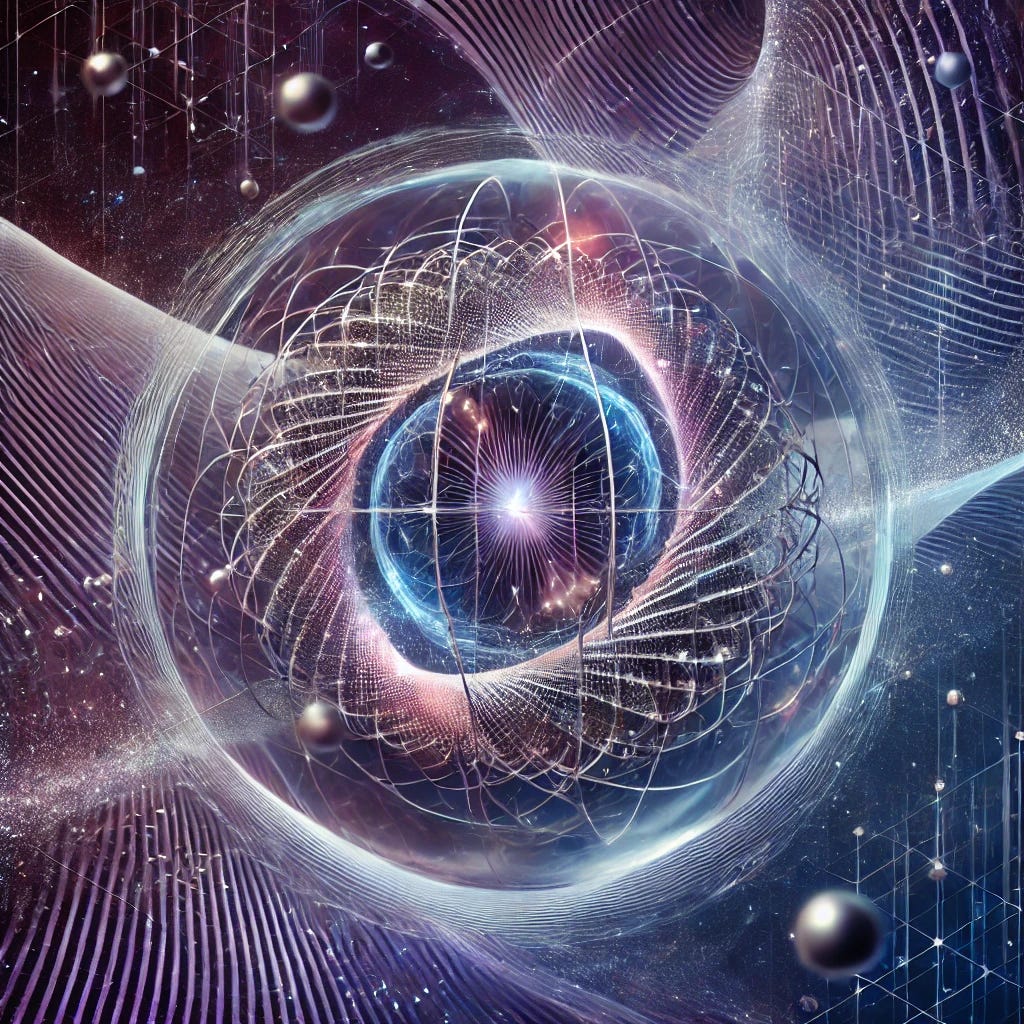The Fiero Theory of Magnetivity
Exploring a New Perspective on Magnetic Fields and the Universe

The Fiero Theory of Magnetivity is an emerging, speculative theory that suggests magnetic fields are far more fundamental to the universe than traditionally thought. This idea posits that magnetic fields are not merely effects of moving electric charges but instead play a crucial role in shaping the structure of space-time, influencing quantum phenomena, and impacting the physical laws governing reality.
Key Points of the Fiero Theory of Magnetivity
While still speculative, the Fiero Theory of Magnetivity offers a series of intriguing propositions that challenge conventional scientific wisdom:
Magnetic Fields as Fundamental Forces
In classical physics, magnetic fields are understood as the result of moving electric charges, emerging from the interplay of electromagnetism. The Fiero Theory, however, suggests that magnetic fields are not simply secondary forces but are fundamental elements of the universe. According to this theory, magnetic fields could influence the organization of particles, the formation of cosmic structures, and the alignment of forces at all scales—from atomic to astronomical.Magnetivity and the Fabric of Space-Time
The theory posits that magnetic fields are intertwined with space-time itself, potentially affecting its curvature and influencing its dynamics. This is a significant departure from current models, where gravity—described by general relativity—determines the shape and behavior of space-time. If true, Magnetivity could provide a fresh approach to understanding how space-time operates, particularly in areas where general relativity and quantum mechanics struggle to align, such as black holes and the early universe.Magnetivity and Quantum Mechanics
One of the more provocative aspects of the Fiero Theory is the idea that magnetic fields might play a role in quantum phenomena, such as entanglement and coherence. Magnetic fields, in this framework, could potentially stabilize or influence quantum states, opening new possibilities for understanding entanglement—a phenomenon where particles remain connected across vast distances—and quantum coherence, a state crucial for the operation of quantum computers.
Current Scientific Consensus
The Fiero Theory of Magnetivity, while captivating, has not gained mainstream acceptance. Here’s a look at how current scientific understanding contrasts with Magnetivity’s claims:
Electromagnetism and Gravity as Separate Forces
In contemporary physics, electromagnetism is understood as one of the four fundamental forces, governed by the interactions of electric charges and their motion. Magnetic fields, according to the standard model, are generated by these moving charges and are part of the broader electromagnetic force. Gravity, on the other hand, is described by general relativity, which views it as the curvature of space-time created by mass. There is no current experimental evidence that magnetic fields play a fundamental role in shaping space-time itself.Lack of Experimental Evidence
For the Fiero Theory to gain acceptance, it would need strong experimental support that demonstrates how magnetic fields independently influence space-time or quantum phenomena. Without empirical evidence, most scientists remain cautious, viewing Magnetivity as an interesting but speculative hypothesis.Integration Challenges
Integrating Magnetivity with existing physics would require a significant shift in current theories. Electromagnetism, governed by Maxwell’s equations, and gravity, as described by Einstein’s general relativity, are well-established frameworks with robust experimental validation. To propose that magnetic fields play a foundational role would necessitate modifications to these models, an ambitious task requiring substantial theoretical and empirical backing.
The Road Ahead for the Fiero Theory of Magnetivity
While the Fiero Theory of Magnetivity is still in its early stages, it raises thought-provoking questions that could guide future research. For this theory to gain traction, a few key steps would be necessary:
Experimental Validation
Demonstrating the theory’s predictions in a controlled experimental environment is crucial. This might involve devising experiments that test the impact of magnetic fields on space-time structures or examine their role in quantum behavior. Such findings would provide a basis for Magnetivity and give it a stronger standing in the scientific community.Incorporating Magnetivity into Established Frameworks
Developing ways to incorporate the Fiero Theory into existing frameworks like quantum mechanics and general relativity could bridge the gap between Magnetivity and established science. This would likely involve a hybrid approach, merging insights from both fields to create a unified model that accounts for magnetic fields in a fundamental role.Collaborative and Interdisciplinary Research
For Magnetivity to gain broader interest, it would benefit from interdisciplinary collaboration among physicists, mathematicians, and experimentalists. Such collaboration could foster innovative experimental designs, computational models, and theoretical frameworks that bring Magnetivity closer to scientific validation.
Moving Forward: Open-Minded Skepticism
While the Fiero Theory of Magnetivity provides an exciting perspective, it’s essential to approach it with both curiosity and critical rigor. It challenges core scientific principles, which means it requires not only innovative thinking but also a rigorous standard of evidence to shift our understanding of the universe. By balancing an open mind with a critical eye, researchers can explore the potential of Magnetivity without compromising scientific integrity.
Conclusion
The Fiero Theory of Magnetivity may yet offer new insights into the mysteries of the universe—from the nature of space-time and the behavior of quantum particles to the fundamental forces that govern reality. Although currently speculative, the theory encourages fresh perspectives, which can often be the catalyst for scientific breakthroughs. With further research, experimentation, and collaboration, Magnetivity could either find its place within the established scientific paradigm or inspire new directions in our quest to understand the cosmos.

